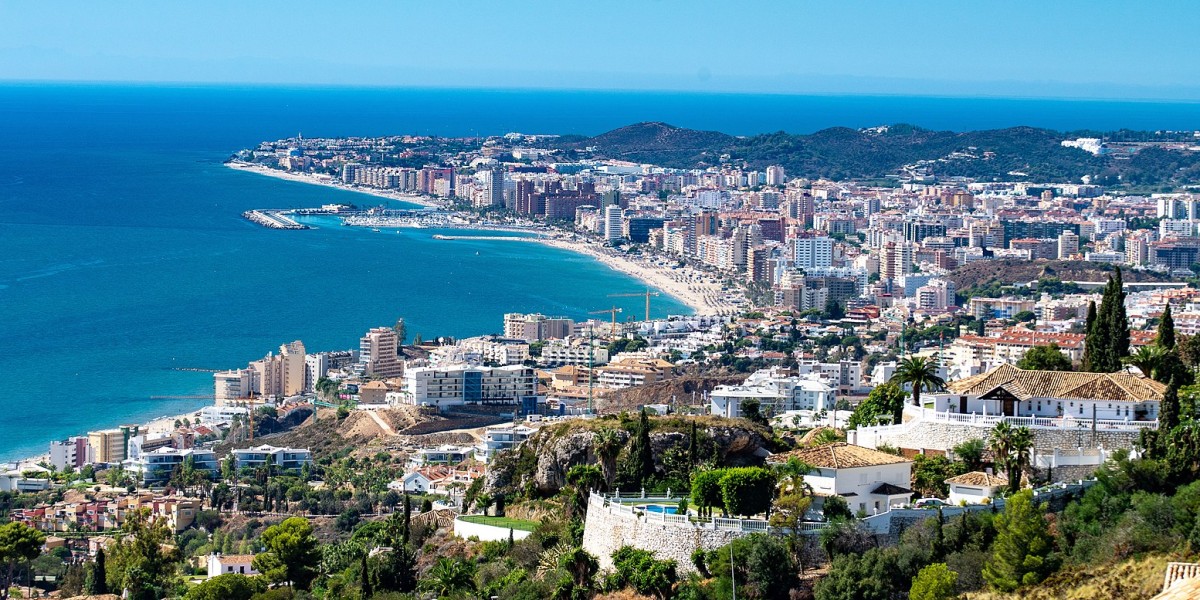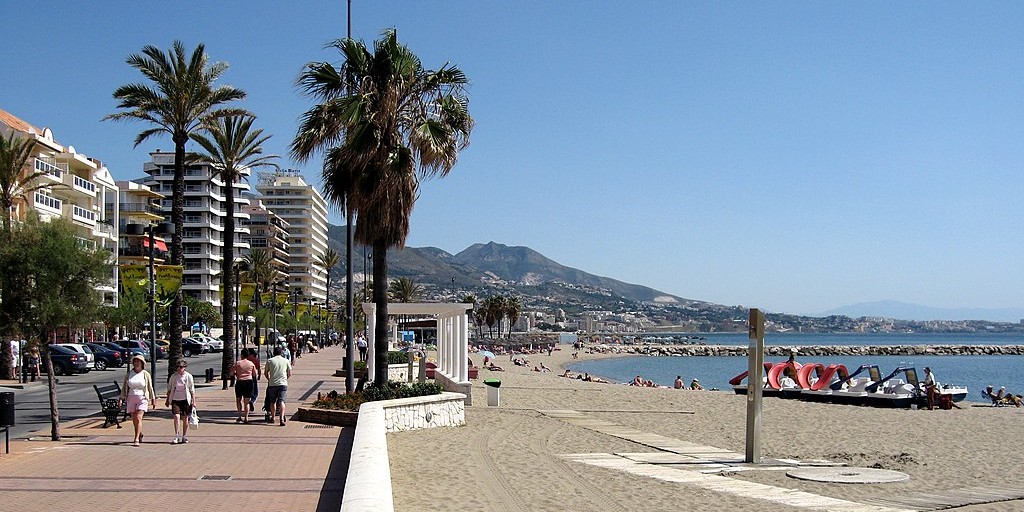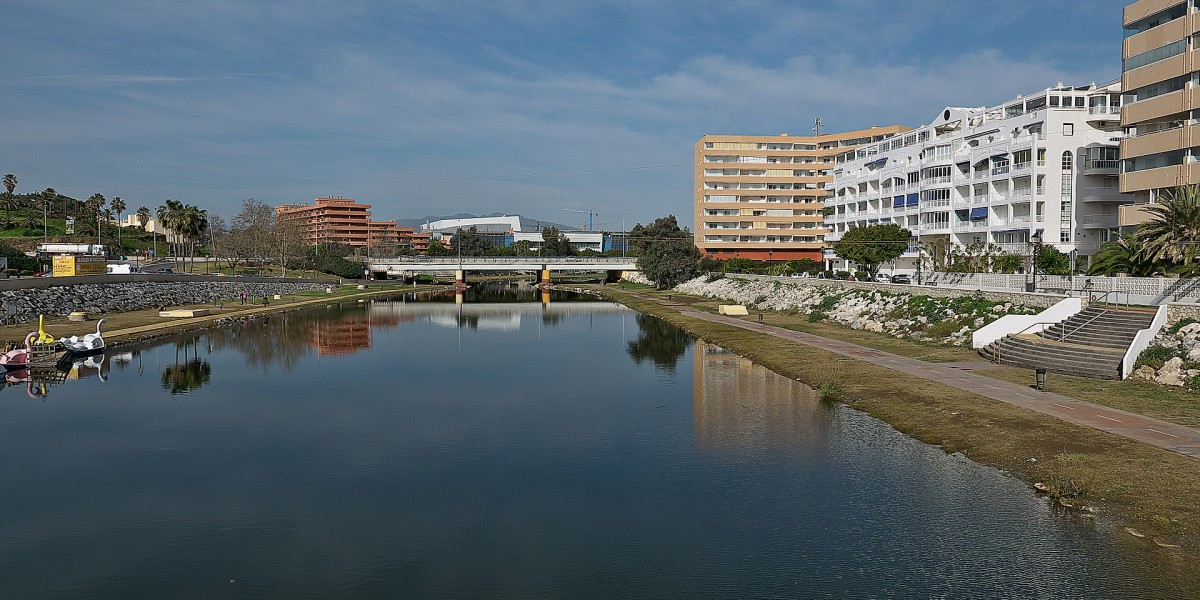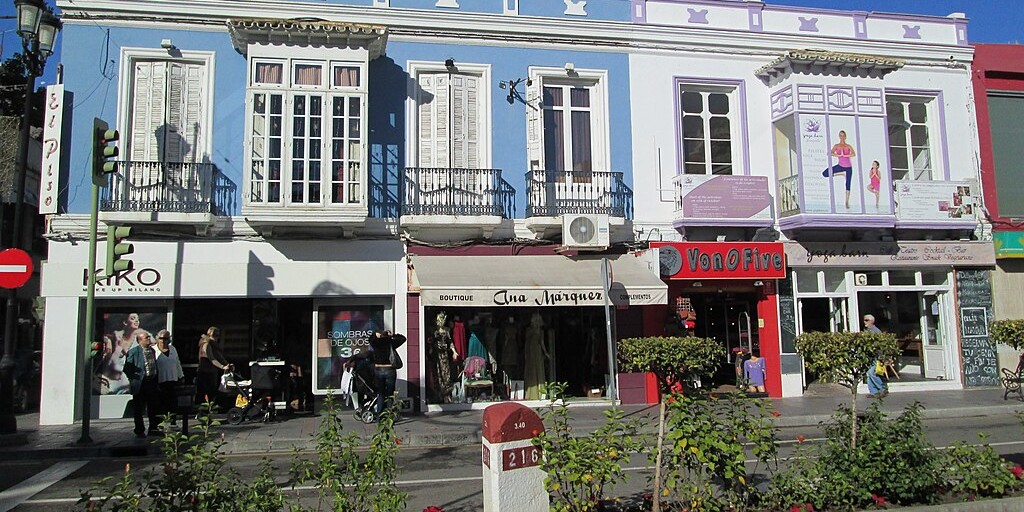
Fuengirola has a reputation on the Costa del Sol, particularly among British expats. While it's true that you'll find a large international community here, that's only part of the picture of what living in Fuengirola is actually like. Beyond the beachfront buzz, it's a working Spanish town with a life of its own all year round.
Sitting almost exactly halfway between Málaga and Marbella, Fuengirola combines the ease of coastal living with practical amenities, holding onto its Andalusian identity while also being accessible for newcomers.
Is Fuengirola nice to live in?
Deciding if Fuengirola is a good place to live really comes down to what you’re looking for. Located along the Costa del Sol, just south of Málaga, this town has a large and long-established international community, so it’s easy to settle in and find familiar services and products. It’s also very practical; the centre is mostly flat, and the public transport is excellent, with a direct train line to the airport and Málaga city centre. However, it is a very developed and busy coastal resort, especially during the summer. If you're searching for a quiet, traditional Andalusian village, Fuengirola might feel a bit too bustling and commercial for your taste.
On the question of safety, Fuengirola is generally considered a very safe town. Violent crime is low, but like any major tourist destination, you do need to be mindful of petty crime. Pickpocketing and bag snatching can occur, particularly in crowded areas like the Tuesday market, along the busy seafront, or in the town centre during peak season.
Pros and cons of living in Fuengirola

Life in Fuengirola has its distinct advantages and some aspects that might not appeal to everyone.
Some of the pros of life in Fuengirola include:
- Excellent transport links: the town is on the C1 Cercanías train line, which connects it directly to Málaga city, the airport, and other coastal towns like Benalmádena and Torremolinos.
- Established international community: there is a large population of foreign residents, particularly from the UK and Scandinavia. This means it's easy to find international clubs, familiar foods, and services in English.
- Year-round services and activity: Fuengirola is a working town with a permanent population. Shops, restaurants, and facilities remain open and active throughout the year.
As for the cons, a couple of things to consider are:
- Summer overcrowding: the population increases dramatically during the peak tourist season from June to August. This can lead to crowded beaches, busy restaurants, and traffic congestion.
- A highly developed environment: much of the town, especially the coastal strip, consists of high-rise apartment blocks and modern developments. If you're looking for the architecture and atmosphere of a traditional Andalusian white village, you may find Fuengirola lacks that specific character.
Best neighbourhoods in Fuengirola: where to live

Choosing where to settle in Fuengirola is a big decision, as each neighbourhood really does have its own personality.
Los Boliches
Once a separate fishing village, Los Boliches still feels like a town in its own right, just east of the main centre. It has a slightly more relaxed pace and a strong local Spanish character, mixed with a large Scandinavian community.
The streets away from the seafront are narrower and lined with independent shops, bakeries, and tapas bars. It’s a very practical area, with its own train station and a popular market on Tuesdays and Saturdays.
Centre
If you want everything on your doorstep, the centre is the place to be. This is the commercial heart of Fuengirola, focused around the main square, Plaza de la Constitución. You'll find high-street shops, the main train and bus stations, and the Fuengirola market, where you can get fresh produce.
It's the busiest and liveliest part of town, especially in the evenings, with countless restaurants and bars. While convenient, it can also be the noisiest area, particularly during the summer months.
Torreblanca
At the eastern end of Fuengirola, Torreblanca is a much more residential and quieter neighbourhood. It’s built on a fairly steep hill, which means many properties have fantastic sea views, but it’s something to bear in mind if you don't enjoy walking uphill.
The beach here is generally less crowded than in the centre, and the area has its own train station, making it easy to get into town or to Málaga. It’s a popular spot for families and those looking for a calmer base of operations.
Los Pacos
Set back from the coast, Los Pacos is a well-kept residential area known for its large Finnish population; it even has a Finnish school (Suomalainen Koulu). This gives the neighbourhood a unique, international feel while remaining very peaceful and family-orientated.
You'll find modern apartment complexes and villas, along with good local amenities like parks and sports facilities. It’s a clean and orderly part of town, great for those who value a quiet community atmosphere.
Can you live in Fuengirola all year round?

Many locals and expats living in Fuengirola full-time find they prefer the town during the "off-season" months. Unlike some smaller coastal resorts that can feel a bit empty after the summer crowds leave, Fuengirola is a proper working town. It has a large permanent population, so the community and essential services don't disappear come autumn, and there are still lots of things to do in Fuengirola.
- Mild winters: while winter isn't hot, it is generally mild and sunny with plenty of bright, clear days.
- Amenities remain open: most shops, supermarkets, restaurants, and bars stay open throughout the year to serve the local and resident expat population.
- A real community: the town has a substantial year-round community of both Spanish and international residents. Local clubs, societies, and social events continue through the autumn and winter.
- Excellent transport links: the C1 train line, connecting Fuengirola to Málaga city and the airport, runs consistently all year.
Living in Fuengirola or Benalmádena

The choice between Fuengirola and Benalmádena often comes down to the kind of layout and atmosphere you prefer. Fuengirola is more of a compact, bustling town built on a flat grid system. This makes it very walkable, and everything feels centralised. The train line runs right through the town centre, and you can easily get by without a car, and its long, straight beachfront (paseo) is the town's main artery.
Benalmádena, on the other hand, is more spread out and consists of three distinct areas. There's Benalmádena Pueblo, the original picturesque white village up on the hill; Arroyo de la Miel, the busy town centre where the train station is; and Benalmádena Costa, the coastal strip. Because it’s built on a hillside, it’s much less flat than Fuengirola, but this also means more properties have impressive sea views.
When it comes to costs, the two are quite similar, but with some slight differences. According to Numbeo, the general cost of living in Fuengirola is about 2.4% higher than in Benalmádena. Looking at the property market, data from August 2025 showed that buying in Benalmádena was cheaper, with prices averaging €3,903 per m². However, average rental prices were slightly higher there than in Fuengirola.
Living in Fuengirola or Benalmádena for families
For families, the decision often involves looking closely at schools and activities. Both towns are well-equipped, but they have different strengths.
Benalmádena is particularly strong on attractions for children. It is home to the large and beautiful Parque de la Paloma, a fantastic public park with lakes and semi-free-roaming animals. You’ll also find the Selwo Marina dolphinarium, the Sea Life aquarium, and the Teleférico cable car that goes up the mountain.
In terms of education, it has some highly regarded international schools, including The British College of Benalmádena and Colegio Internacional Torrequebrada.
Fuengirola also has excellent family amenities. Its main attraction is the Bioparc Fuengirola, a respected modern zoo with a focus on conservation. The beaches are very long, sandy, and accessible, making them great for kids.
For schooling, the Los Pacos neighbourhood is well-known for being family-friendly and is home to the Finnish School and the Swedish School (Svenska Skolan), while other international options like St Anthony's College are also nearby.
Ultimately, Benalmádena might have more large-scale attractions, while Fuengirola’s flat, compact layout can make daily logistics like school runs and errands a bit simpler on foot.
Is Fuengirola expensive?

When it comes to the cost of living in Fuengirola, it sits somewhere in the middle for the Costa del Sol. It’s not as pricey as Marbella, but the rising demand means it’s not as cheap as it once was.
For your day-to-day expenses, things are quite reasonable. A coffee out will usually cost you about €2.50, and a beer rarely goes over €4. When eating out, a main course at a more casual restaurant is around €14.50, while a decent three-course meal for two people at a mid-range place will be about €60. Monthly outgoings like utility bills for a standard apartment generally land somewhere between €100 and €200.
A monthly gym pass is also pretty standard at around €40. One of the best local perks is the bus service; once you are registered as a resident, you can get a card that allows you to travel for free on the five local lines.
Your main expense will be housing. The property market here has seen significant growth. As of August 2025, property prices in Fuengirola averaged €4,301 per m², which is a steep 18% increase from the year before. For renting, prices averaged €15.9 per m², meaning an 80m² flat would cost around €1,272 per month.
